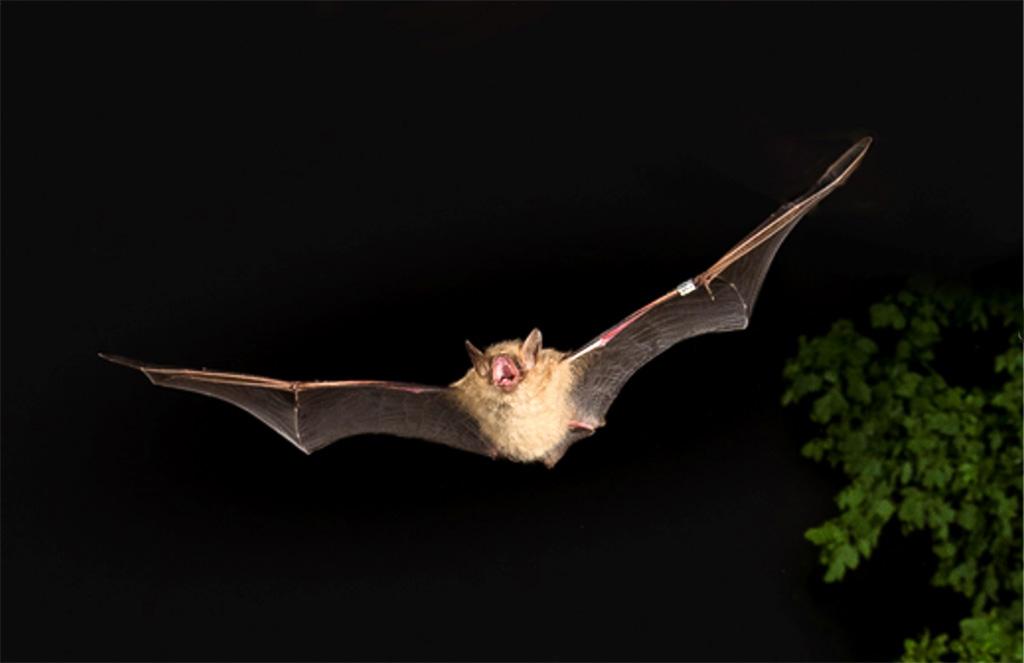
Project Highlights
This project builds on industry experience, scientific research and early-stage deployment of deterrent and curtailment systems by creating a toolkit supporting comprehensive technology evaluation and implementation guidance.
- Leverage a community of industry experts to guide toolkit development and inform on latest experience
- Establish guidelines for technology evaluation and implementation
- Create a testing protocol and operational tools to support technology demonstration and implementation
- Develop regional analysis methods to evaluate production performance and bat fatality reduction for individual wind farms or potential future sites.
Background, Objectives, and New Learnings
Bat species around the world are under threat of population decline due to various factors ranging from habitat loss and diseases such as white nose-syndrome (WNS) to interactions with expanding energy infrastructure. Bats play a critical biological and economic role because of their pest control and pollinator contributions, which have been estimated to provide billions of dollars in value for various regions and industries. Declining bat populations are a threat to overall biodiversity and a growing regulatory risk for the wind industry. There is an opportunity for the energy industry to take a proactive approach to broadly deploy bat fatality mitigation strategies through focused research, collaboration, and technology demonstration.
Current bat fatality mitigation strategies include operational minimization (e.g., curtailment) and deterrent technologies, with new approaches being proposed as bat behavior is better understood. All are being developed to aide wind farm operators in mitigating bat fatalities in support of regulatory compliance and environmental stewardship objectives. However, they are not being implemented at scale because of continued uncertainty about regulations, technological readiness, economics, and effectiveness of potential solutions. There has been a lack of guidelines assisting individual companies and sites when evaluating, implementing, and measuring the impact of technology deployment on both wildlife and energy production.
This project seeks to:
- Create a collaborative forum of operators and global experts in the field to gather lessons-learned and best practices, informing technical efforts
- Establish practical guidelines that support large-scale commercial deployment of deterrent and curtailment systems for wind farms
- Create a framework with benefit-cost analyis tools to assist decision-making
- Build scalable and comparable testing protocols for site operators to critically evaluate technology options applicable to bat species they may encounter
- Build evaluation/software tools to ensure that operational minimization or deterrents are running and being implemented reliably and correctly
- Evaluate the regional and grid-scale energy and cost ramifications and trade-offs from large scale operational minimization (e.g., curtailment)
- Develop site-specific and regional bat fatality optimization strategies that maximize energy production meeting bat fatality/risk reduction targets
Benefits
This project can help companies to accelerate the adoption and scaling of bat fatality mitigation technology options by:
- Helping operators understand how and when to deploy bat fatality mitigation strategies and technologies safely and effectively
- Understanding wind asset performance/economic benefits and costs as a function of fatality mitigation
- Reducing overall regulatory and environmental risk
Potential public benefits of this project include contributing to stabilizing bat species populations and and their associated environmental contributions, as well as supporting more reliable, economical, and sustainable generation from wind energy assets.
Project Approach and Summary
The project will be organized into the following phases.
- State of Technology and Community of Practice
EPRI will synthesize existing information from scientific literature and industry experience through the development of a community of practice to share lessons learned with one another. Concise deliverables will aim to communicate the potential of deterrent and curtailment strategies to support bat fatality mitigation, help stabilize bat populations, and reduce regulatory risk while increasing wind farm energy production. - Implementation and Operational Guidelines
Based on information, practices, and data gaps identified during the initial phase of the project, implementation and operational guidelines will be developed to support the identification, deployment, and operation of existing and emerging regional, site, and species-specific fatality mitigation strategies and technologies. - Technology Evaluation and Demonstration Support
In the final project phase, EPRI will aim to estimate effectiveness of and provide guidance for evaluating and demonstrating fatality mitigation strategies and technologies at a minimum of one wind farm location for individual participants. This phase is intended to involve individual participants and the wind industry.
Deliverables
The deliverables for this project are expected to include:
- Community of practices workshops and meetings with regular webcasts
- Stakeholder-focused deliverables communicating environmental, technical, and societal considerations
- Report on guidelines for commercial deployment of smart curtailment and deterrent technologies
- Protocols for site-specific technology evaluation
- Method and reporting on cost and performance trade-offs of bat fatality reduction solutions
- A database of deterrent and curtailment system deployments among participants, including information on technologies
Price of Project
The annual participation price is based on annual total wind generation metrics. A three-year commitment is required. A minimum of six funders is required to commence work.
| Tiers | Metrics | Funding per Year |
|---|---|---|
| Tier 1 | Wind Generation > 2,500 MW | $60,000 |
| Tier 2 | 2,500 MW < Wind Generation | $40,000 |
| Alternate | No Wind Assets | $50,000 |
This project is eligible for self-directed funds (SDF).
Project Status and Schedule
This project aims to launch in 2025 and is expected to continue for at least three years.
Who Should Join
Energy companies that currently operate or plan to operate wind assets and those organizations that have wind energy generation assets in their region.
Contact Information
For more information, contact your Strategic Account Executive or the EPRI Customer Assistance Center at 800.313.3774 (askepri@epri.com).
Technical Contacts
Christian Newman, cnewman@epri.com
Terry Jennings, tjennings@epri.com